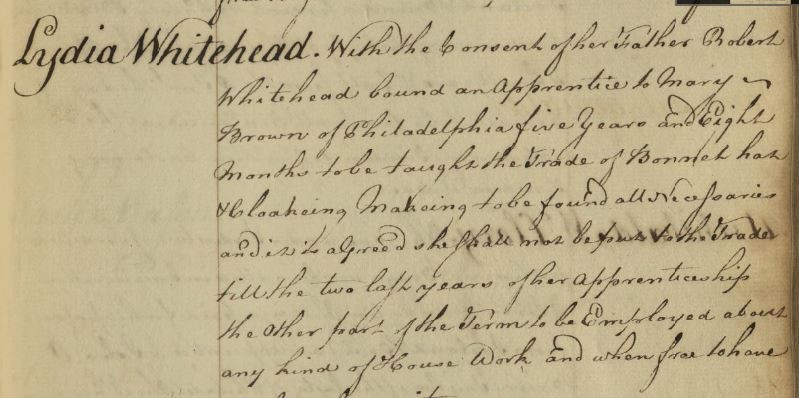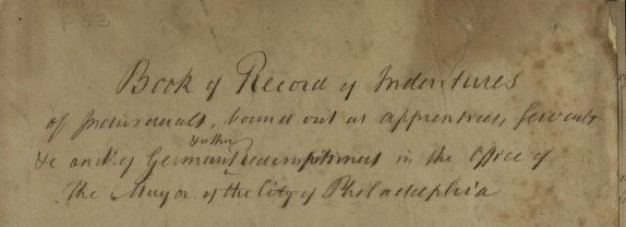Indenture Mining: Making Pre-Industrial Tradeswomen Visible (Part I)
Here at the American Philosophical Society's Center for Digital Scholarship, I spent several months this past winter continuing the work of former CV Starr Explore America Intern Ben Weinstein (2017) on our manuscript volume “Book of Record of Indentures of Individuals bound out as apprentices, servants, etc., and of German and other Redemptioners in the office of the Mayor of the City of Philadelphia from October 3rd, 1771 to October 5th, 1773.” This distinctive document is currently available to view in the APS Digital Library. A blog post on Ben’s project can be found here. As part of an APS Library Open Data Initiative, I’ve been transcribing entries recorded in the volume in order to make the data more accessible. While engaged in this work, I became interested in some unusual entries: those of female apprentices.
Each entry in the book contains details about the person to be indentured, including their name, country of origin, length of contract, and amount of debt owed. Sometimes even more details are present, like their age, the amount of education they were to receive, and the profession they might train for under apprenticeship. Many of the entries are similar—boys and men indentured or apprenticed within the Philadelphia area—so the contrast of seeing such unusual contracts such as women’s apprenticeships make them really stand out.
Tradeswomen by the numbers
Roughly 80% of the book’s estimated 5,000 entries have now been transcribed, which gives a pretty good estimation of the overall ratio of apprenticeship assignments by gender. So far:
- 17% of the 1,084 total apprenticeship contracts accounted for so far were assigned to women
-
Most of these women were to learn “housewifery” (88%)
-
22 of these women were apprenticed for other trades, most commonly as mantua-makers, breeches makers, stays makers, milliners/bonnet makers, and cloak makers
-
The single exception is one woman who was also to learn “the sewing and folding of books.”

Having done the math, I began to wonder about the lives of these women. If it was unusual in the context of the indenture book entries to find a woman apprentice, would it have been as unusual in practice? Were these savvy tradeswomen, living independently in a world of business that (from this documentation at least) seemed to have been dominated by men? What were their lives like, and what might have been the circumstances that drove their entrance into apprenticeship? I wanted answers, so I began to do some digging. Stay tuned to find out what I discovered in the second installment of this two-part article.

